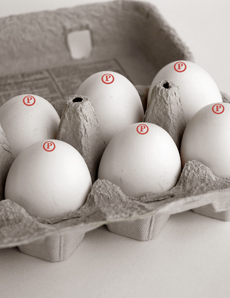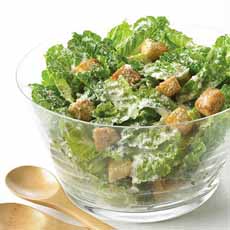TIP OF THE DAY: Pasteurized Eggs Can Be Safely Eaten Raw In Recipes
|
Do you make or eat these foods? Then there are undercooked recipes with egg, such as over easy eggs, sunny side up eggs, Eggs Benedict or other dish with hollandaise sauce, and other lightly cooked egg sauces and custards. If you make or eat them, you fall into one of three groups: the group that ignores the risk of salmonella poisoning from raw eggs; the group that cooks the eggs or uses liquid egg products, which alters the taste of the recipe; or the third, best, group, which uses pasteurized eggs. The U.S. Department of Agriculture (USDA) does not recommend eating eggs that are raw or undercooked. But it states that “In-shell pasteurized eggs may be used safely without cooking.” |
|
|
|
PASTEURIZED EGGS Pasteurized eggs undergo an all-natural pasteurization process that kills harmful bacteria without altering the consistency or texture of the eggs: They look and act just like raw eggs while eliminating the risk of salmonella. Unlike processed egg liquids, they deliver the fresh, wholesome flavor and quality of raw eggs. So you can enjoy the brownie batter, cookie dough, and other raw egg foods with the gusto they deserve. That’s certainly worth going the extra step to bring home pasteurized eggs. If your grocer does not carry them, ask the manager to bring them in. Learn more at SafeEggs.com. |
||
 The “P” is for pasteurized. Photo courtesy Davidsons. |
HANDLING RAW EGGS The USDA requires a safe-handling advisory statement on all packages of raw shell eggs* that are not pasteurized to destroy salmonella: “SAFE HANDLING INSTRUCTIONS: To prevent illness from bacteria: Keep eggs refrigerated, cook eggs until yolks are firm, and cook foods containing eggs thoroughly.” The USDA further advises: “Use pasteurized eggs or egg products when preparing recipes that call for using eggs raw or undercooked.” Pasteurized eggs do not need to carry this warning because they eliminate the risk of salmonella. ___________________ *Some egg white cocktails: Baltimore Bracer Cocktail, Chicago Fizz, Clover Club Cocktail, Commodore Cocktail, Eucalyptus Martini, Ginger Sour, Gin Sour, Million Dollar Cocktail, New Orleans Fizz, Old Thyme Sour, Pisco Sour, and Pink Lady, among others. †Shell eggs are eggs sold in the shell, as opposed to packages of de-shelled eggs that can be purchased by foodservice, where professionals are trained in safe handling. |
|
|
RAW EGGS & SALMONELLA Eggs are an economical, enjoyable food; but raw eggs, as has been noted, can be a source of salmonella poisoning. Raw eggs, undercooked eggs, or foods containing them are the leading cause of salmonella foodborne illness in the U.S. today, responsible for 4 out of 5 salmonella infections. And it’s not just obvious recipes like Caesar salad: Over a four-year period, 17 outbreaks and more than 500 illnesses in the U.S. were traced to salmonella bacteria in homemade ice cream, according to the CDC. The Centers for Disease Control (CDC) has estimated that annually 2.2 million eggs are contaminated with salmonella. They warn that “everyone is at risk for egg-associated salmonellosis.” Tthe U.S. Department of Agriculture (USDA) does not recommend eating eggs that are raw or undercooked. The CDC created a report identifying the 10 riskiest foods regulated by the FDA. Raw eggs were #2, following leafy greens. Here’s the full report. Occasionally, a small blood spot will appear in an egg yolk. This actually indicates an extremely fresh egg. It is not a fertile egg, but rather a ruptured capillary that appears on the yolk surface during the egg formation. These eggs are safe to eat and the blood spot can be removed with a knife if you are concerned about the appearance. Discover all the different types of eggs in our Egg Glossary. CHECK OUT WHAT’S HAPPENING ON OUR HOME PAGE, THENIBBLE.COM.
|
||




